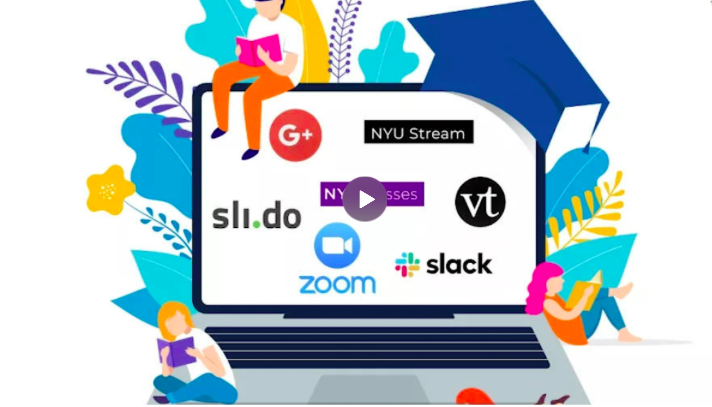In an effort to help universities around the world preparing to transition online to prevent the spread of COVID-19, NYU Shanghai today released the comprehensive digital teaching toolkit it has developed since deciding to move to digital instruction in January.
“Because COVID-19 struck China first, NYU Shanghai has had a bit of a head start in using distance learning technologies,”said Vice Chancellor Jeffrey Lehman. “Now that the spread of the virus is forcing more universities to close campuses and go online, we are happy to share our expertise and make our toolkit available to the international academic community. ”
Vice Chancellor Jeff Lehman walks us through the various ways that faculty at NYU Shanghai have adapted to and thrived under digital learning.
Since February 17, nearly 1,000 NYU Shanghai students and faculty have been engaging in some 300 courses via digital technologies. NYU Shanghai professors have been working since late January to find innovative ways to customize technologies such as Zoom, Voice Thread, Kultura and others to their own specific course needs and to ensure the delivery of high-quality teaching and learning.
"When the virus broke in January, NYU Shanghai assembled a set of tools, instructional materials, and tips so that our professors could transform face-to-face classes — even large classes — into digitally mediated classes,” Lehman said. “The key was to enable our teachers to keep their students as 'active learners,' rather than being relegated to passively watching videos on their laptops.”
"Our faculty used this toolkit to transform three hundred courses in three hundred different ways, reflecting their individual pedagogic philosophies. They have now been teaching for several weeks in this manner, and have generously taken the time to share their experiences and lessons learned as ‘case studies’ to the toolkit.”
Not just faculty, but NYU Shanghai departments such as Student Life, Academic Affairs, Health and Wellness, and the Career Development Center have also adapted the technologies to recreate online such previous live services as academic and career advising, mental health counseling, and club meetings. Their experiences will also be included in the case studies section in the coming weeks.
The toolkit includes a guide to the various digital tools and software recommended by the NYU Shanghai Libarary’s Research and Instructional Technology Services (RITS) team, as well as their various strengths and weaknesses. Since not all solutions fit all courses, the toolkit also helps professors match their preferred modes of instruction - for instance, livestream or pre recorded – with appropriate technologies. The website also makes recommendations for software to promote active class discussion and administering tests and quizzes. NYU Shanghai library staff also created webinars and animations to introduce both faculty and students to each of the various tools. A quick tips section addresses frequently encountered problems.
“We are proud of the efforts we made in such a short amount of time - just three weeks from the decision to go online until the first day of class,” said Xiaojing Zu, director of the NYU Shanghai library. “And we are constantly fine-tuning, learning from our efforts, and expanding the digital resources available to our community. We hope that the toolkit website will be a helpful resource for any institution that wishes to ensure high quality digital instruction during these unique and challenging times.”



